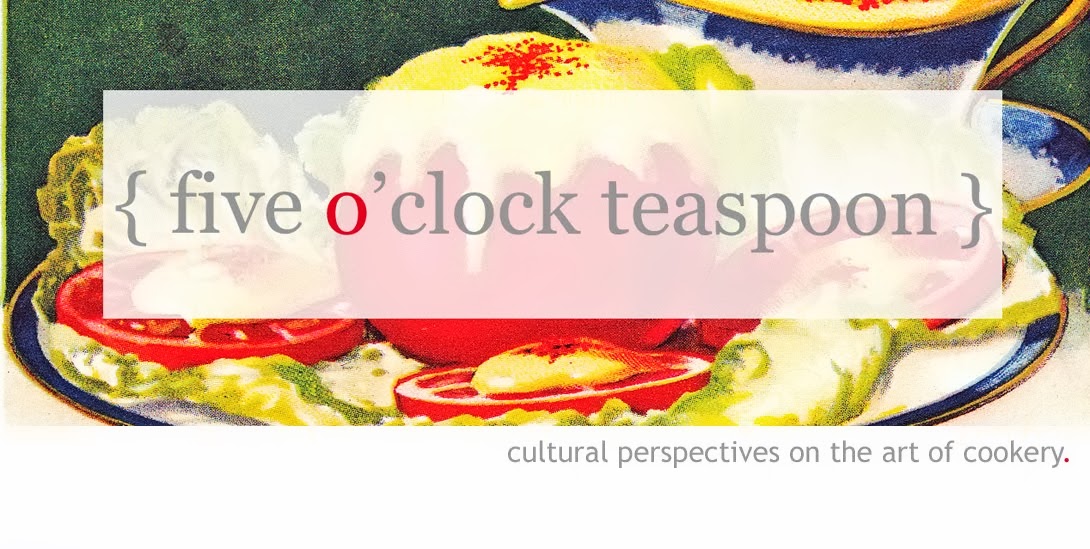Like its close relation, the currant, the gooseberry (Ribes) grows in perfect harmony with the long days of summer. The fruiting season is slow and measured, beginning in the early spring, when the lanky bush sprouts tiny green shoots and eventually shy, white blossoms. In the summer, the branches bend toward the ground with neat rows of green, delicately veined fruit, slowly maturing to purple orbs around midsummer. It is always a little sad when you realize that the bush is suddenly bare, all the fruit having finally fallen or been eaten, as this marks the end of summer.
Indigenous to the temperate zones of Europe, the gooseberry is known to have been cultivated as early as the thirteenth century. It became a conventional ingredient by the sixteenth century and was used in sauces and stuffings. ("Gooseberry" An A-Z of Food and Drink. Ed. John Ayto. Oxford University Press, 2002). Because of their tartness, gooseberries will combine well with anything sweet, such as the custards and cream desserts with which they have long been paired. Gooseberries can be eaten in both the unripe and ripe states, the latter being slightly sweeter and less acidic.
Beloved in Britain, gooseberries were put to good use in the classic fool. The earliest extant English recipe for gooseberry fool is found in Hannah Glasse's Art of Cookery (1747) and has not varied much in comparison with present-day adaptations. Below, I've featured the recipe I use, followed by Glasse's recipe. Since gooseberries are not often seen in markets, they are worth growing yourself, producing an abundant, disease- and pest-free crop of ready to cook, vitamin-rich fruit. This season, I'll also try the gooseberry and elderflower cake recipe from Fennel & Fern.
 |
| Gooseberry Fool made with ripe purple gooseberries. |
Recipe
Gooseberry Fool
You can use green or purple gooseberries for the fool. Since I have only made this recipe with ripe, purple ones, you may find that unripe, green gooseberries require a little more honey or sugar for the compote. Adjust with a teaspoon at a time until you get a nice sweet/tart balance.
Ingredients
1 pound green or purple gooseberries (about 3 cups)
1/2 cup honey
Juice and zest of 1 orange
1/2 tsp vanilla extract
pinch of salt
3/4 cup heavy cream
1 Tbs granulated sugar
1. Prepare gooseberries by removing the tiny tails with a sharp knife or fork tines.
Slice gooseberries in half and place in a heavy saucepan. Add honey, vanilla, and salt. Cover the pot and cook over medium heat for 10 minutes, stirring every couple of minutes. When the mixture is bubbly and the fruit has softened, remove from the heat and allow to cool. Pour into a bowl and refrigerate until cold, 30 minutes to 1 hour.
2. Whip cream and gradually add sugar. Continue whipping until soft peaks form. Reserve about 1/3 of the compote mixture for garnish and fold the remainder into the whipped cream until well blended. Spoon the fool into 6 serving glasses or bowls and chill for 1 hour before serving. Serve garnished with reserved gooseberry compote. Keeps up to 2 days refrigerated.
Period Recipe from The Art of Cookery (1747) by Hannah Glasse
To make a gooseberry fool.
Take two quarts of gooseberries, set them on the fire in
about a quart of water. When they begin to simmer, turn yellow
and begin to plump, throw them into a colander to drain
the water out ; then with the back of a spoon carefully squeeze
the pulp, throw the sieve into a dish, make them pretty sweet
and let them stand till they are cold. In the mean time take
two quarts of new milk, and the yolks of four eggs beat up
with a little grated nutmeg; stir it softly over a slow fire ; when
it begins to simmer, take it off, and by degrees stir it into the
gooseberries. Let it stand till it is cold, and serve it up. If you
make it with cream you need not put any eggs in : and if it
is not thick enough, it is only boiling more gooseberries, But
that you must do as you think proper.







